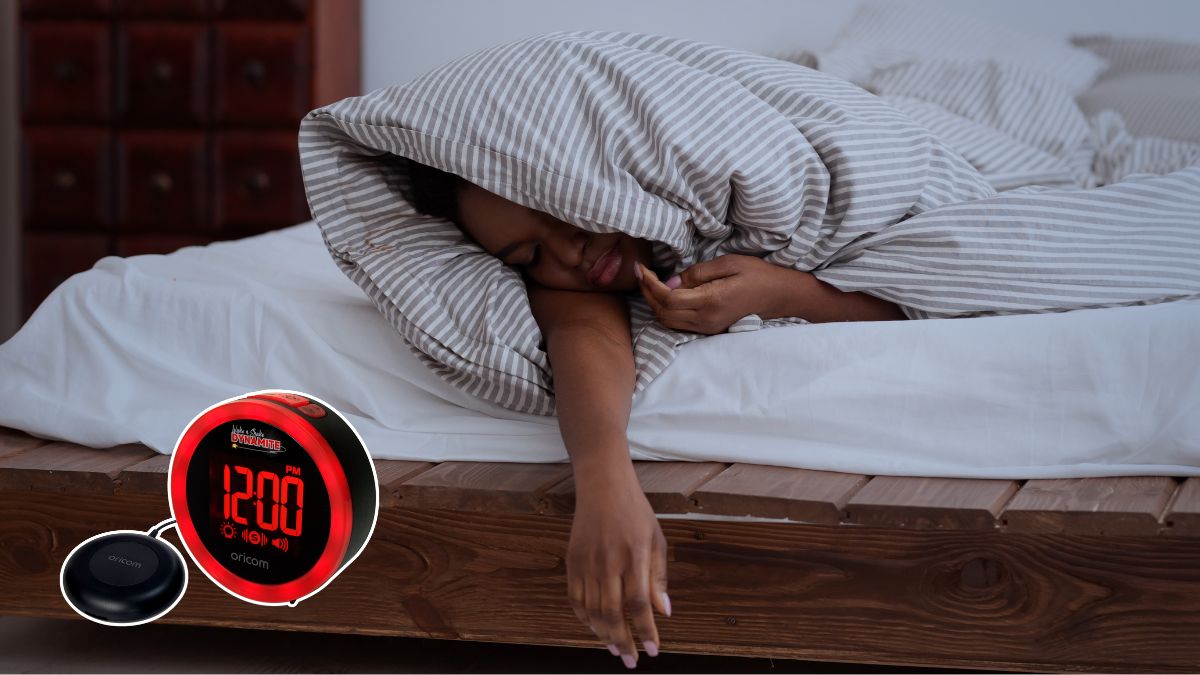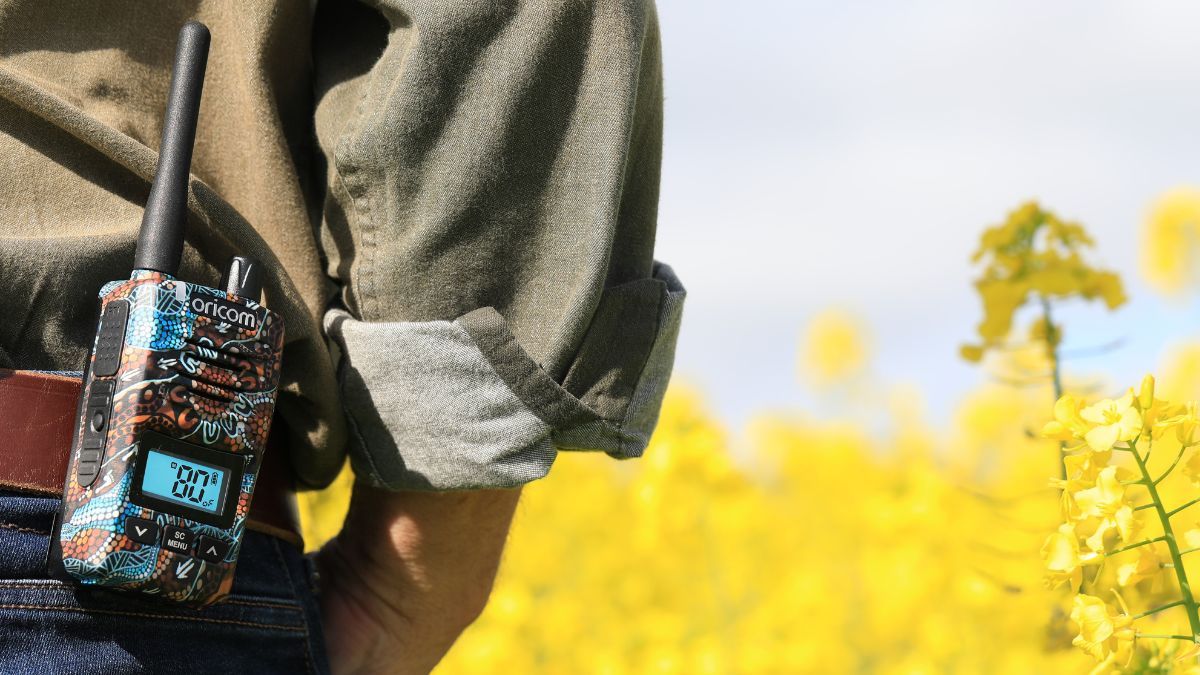Both UHF CB Radios, and VHF radios are widely used in Australia for personal, professional and safety communication. The choice between Ultra High Frequency Citizen Band (UHF CB) and Very High Frequency (VHF) radios is often misunderstood, so the below may help to clear some of the confusion.
UHF CB and VHF radios offer distinct advantages depending on your specific needs. In this guide, we’ll break down the basics of UHF and VHF radios, their differences, and how to decide which is best suited for your requirements, all while keeping in mind the unique conditions and requirements of Australia.
The Basics of UHF CB and VHF Radios
UHF CB Radios or ‘Ultra High Frequency Citizen Band’ radios are an ideal close-range communications tool with no ongoing fee. The UHF is ultimately a two-way radio system across the spectrum of 476.4250–477.4125MHz. In 2024, the UHF CB frequency range is divided into 80 channels, which are outlined for their various applications in the graphic below.
VHF or Very High Frequency radios is the most common radio frequency for marine transmission in Australia. The VHF maritime mobile band consists of channels operating in the frequency range 156.000 MHz to 162.050 MHz, apart from those portions within this frequency range that are allocated to the land mobile service.
UHF vs VHF: What’s the Difference?
UHF: Although UHF CB radios have a narrower broadcast range, their wider frequency spectrum allows for better coverage with less interference. Their ability to penetrate urban obstacles makes them suitable for a wide range of applications, including indoor environments and rugged terrains. Traditionally, in Australia – UHF CB Radios are available in both Handheld and Fixed mount form factors.
- A handheld UHF CB Radio is a portable battery powered unit, and is available in Australia as 0.5W, 1W, 2W and 5W (maximum) power outputs.
- A Fixed Mount UHF CB Radio is a permanently installed solution in the cab of the vehicle, and is powered by the battery. These radios are available in many different form factors including micro and compact size transceivers, and even radios with a controller speaker microphone where all the controls of the radio are on the handpiece, and the transceiver is tucked away.
VHF: With their long history of use, VHF radios are generally less expensive but come with fewer available channels, potentially leading to congestion. They are best suited for outdoor environments where line-of-sight communication is unobstructed. i.e. Across water. There are two primary types of VHF Marines radios, Handheld and Fixed Mount.
- A HANDHELD VHFradio is a portable battery powered unit, which can move around the vessel and is shared between users. Importantly a handheld VHF Marine radio is still functional should the boats battery die, or electrical system fail.
- A FIXED-MOUNTVHF Radio is a permanently installed solution, and is powered by the vessels electrical system.
What are the benefits of UHF CB communication?
Great for close range communication off-road, camping or fishing – the perfect way to stay in touch.
What are the benefits of VHF communication?
A VHF marine radio is arguably the most important safety tool on board any vessel. Ensuring you have a quality marine radio installed is critical for communication with other vessels, marina operators, or to ensure a user has the option to contact Marine Rescue in the event of an emergency. Given that VHF Marine radios are all about safety on the water, one of the primary advantages of ensuring a VHF Marine radio is installed on a vessel is the Digital Selective Calling feature. Explained below.
What is Digital Selective Calling (DSC)?
The Digital Selective Calling (DSC) feature on your Marine VHF radio uses an arranged digital data message, instead of voice, in order to transmit urgent or important information to another radio. DSC is designed to alert all radios within a predetermined range to a distress message, even if the vessel’s listening watch is not being maintained, as this increases the chance of the signal being heard.
Choosing Between UHF CB and VHF Radio
The decision isn’t about which type is universally better, but about which one aligns with your specific needs. Consider the environment you’ll be operating in, the type of obstacles present, and your communication range requirements.
Who Uses UHF CB Radios?
Due to their superior barrier penetration, UHF CB radios are favoured in urban areas and multi-storey buildings. They are widely used across the below sectors, plus many more:
- Trucking and Commercial
- Farming and Forestry
- Defence and Armed Forces
- Mining and Industry
- Trades, Small Business and Couriers
- Traffic Management and Construction
- Event Organisers and Security
- Emergency and Volunteer Services
- Recreational 4WD
- Touring Vehicles
- Schools and Local Community Sports
- Hunting
- Hiking and Bushwalking
- Offroad Enthusiast Activities
- Hobbyists (Canyoning/Prospecting)
Are there rules when using UHF CB radios?
- Be aware of the Emergency channels (5 and 35) which are strictly to be used for Emergency communications only. Emergency services monitor these channels and respond to requests for help.
- When communicating on a main channel (i.e. Channel 40 – Highways and trucks), once contact is made on the channel, it is accepted that both ends of the communication shift their discussion over to another channel in order to free the main channel up.
- Be aware that all correspondence across the UHF CB frequency range is public. Anyone who is within range is free to join in with the conversation.
- Be aware of all of the channels below, which will help guide your correspondence and how you use the UHF CB frequency for on or offroad communications.
UHF CB Radios Channels:

Marine VHF Channels:

Oricom: Your Partner in Communication
At Oricom, we specialise in UHF CB radio communication solutions designed for the Australian landscape. Our products are built to withstand tough conditions and come with a 5 Year Warranty (In Vehicle) and 3 Year Warranty (Handheld), ensuring reliability and durability for all your adventures. Whether you’re exploring the vast outback or managing operations in urban spaces, Oricom has you covered with our premium range of fixed-mount and handheld UHF CB radios, as well as VHF marine radios and antennas designed for the Australian marine environment.
Conclusion
Choosing the right two-way radio for your application involves understanding the key differences between UHF CB and VHF options. By considering your operational environment and communication needs, you can select a system that enhances efficiency and connectivity. With Oricom’s expertise and robust product range, you can count on reliable communication solutions tailored to the unique challenges of the Australian outdoors.
We would love to hear from you, so please contact Oricom today to discover how we can support your communication needs and help you Stay Connected, wherever you go…



 Baby Care
Baby Care Senior Care
Senior Care Air Purifiers
Air Purifiers UHF CB Radios
UHF CB Radios Tyre Pressure Monitors
Tyre Pressure Monitors Automotive Products
Automotive Products Marine VHF Radios
Marine VHF Radios















